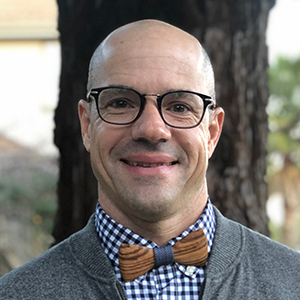
14 Sep An Interview with William B. Dunbar, Ontera

William B. Dunbar (Bill) co-founded Ontera Inc. (formerly Two Pore Guys, Inc.) and currently serves as Chief Technology Officer to lead data analysis and IP creation and oversight for Ontera’s technologies. Prior to Ontera, Bill was an engineering professor for 12 years at the University of California, Santa Cruz, publishing over 50 peer-reviewed papers and earning the National Science Foundation’s prestigious CAREER award. Read his full bio.
Interview with William B. Dunbar, Ontera
Q: Nanopore technology has been touted as a convenient and versatile DNA detection platform, but it has yet to reach its potential. Why is that, and how is your platform different?
A: Single solid-state nanopore technology has yet to reach its potential even though the initial work was done nearly 20 years ago (Li J, et al., Nature, 2001) simply because no one has yet scaled solid-state nanopore devices (chips) and instrumentation for widespread adoption. The technology has not yet left the academic research setting, and there are only about 100-200 labs around the world doing solid-state nanopore research, primarily because the barrier to entry is high. Specifically, the chips are hard to make, and hard to get working reliably, and the instrumentation is expensive.
Consistent with our philosophy of democratizing diagnostic testing, our NanoCounter product kit solves this, by making a complete solution (instrumentation with packaged devices ready for use) accessible to anyone with a laptop and a pipette, at a very affordable price point. From the moment they open the box, whether it’s an academic user familiar with nanopore technology or a scientist working in a domain that has never even explored nanopore sensing, the user should have a single-molecule experiment up and running within minutes. We think it will be a platform for accelerated discovery and invention for anyone looking to interrogate samples for nucleic acids, proteins, and/or other small molecules.
Q: How do your devices work?
A: We have both single and dual-pore devices. In our single-pore product line, which includes the NanoCounter and a portable NanoDetector device, the pores are designed to capture and pass single molecules that are negatively charged, one at a time, when you apply a positive voltage. Anything that is negatively charged will go through, and the electrical signal temporarily shifts when it does. The shift can be analyzed in a variety of ways, ideally to reveal and discriminate grosser features of interest. For example, in a basecase, if someone wants to see the difference between a shorter DNA (e.g., 500 bp) and a longer DNA (5000 bp) in a mixture of the two species, the shifts will last longer for each longer DNA compared to the shorter DNA. The capture frequency is generally proportional to the concentration (pM to nM dynamic range). After recording hundreds to thousands of events in five minutes or longer, the total population recorded can reveal the two populations. People using the kit can explore from there. They can try looking at how proteins bound to DNA look differently than either the DNA alone or the proteins alone. Or, they could try to detect molecular features along a DNA carrier strand beyond just proteins. The could explore DNA origami to create new shift signatures, and recruit other molecules of interest through binding or other chemistry steps. The next generation device is called the NanoDetector, and it is designed to look for specific targets in a sample-to-answer format. This requires integrated sample preparation and PCR (with primers used to amplify one or more targets of interest). Without getting into those details, I’ll say this product has agricultural (crop and food testing) applications in mind, and for whom we are developing specific assays through contracts with our industry partners.
Q: What are the potential applications?
A: The NanoCounter is a research tool, one that should be fun to see take off in the maker space. The NanoDectector is a portable and durable instrument that is designed to work even in extreme environments, with minimal hands-on time or training required. We see this technology as transformative for point-of-need testing, both in healthcare and agriculture. We have already received the support of the Bill and Melinda Gates Foundation, as well as the Intelligence Advanced Research Projects Activity (IARPA) of the Office of the Director of National Intelligence and the National Institutes of Health to test the device’s use for tuberculosis and Zika diagnostics, and to develop specific genotyping tests for the diseases. As I said above, we have also partnered with large agricultural companies to test its capabilities to detect plant diseases.
Coming full circle to the subject of the PMWC talk, our dual nanopore instrument is called the NanoMapper, and is ideal for more complex applications, such as digital information storage, multiplexed sensing, genome mapping & epigenetics. I think the audience will geek out on the data. It’s quite incredible what you can do with feedback control, single molecule sensing, and data mining. I’m excited to talk about it any chance I get!






